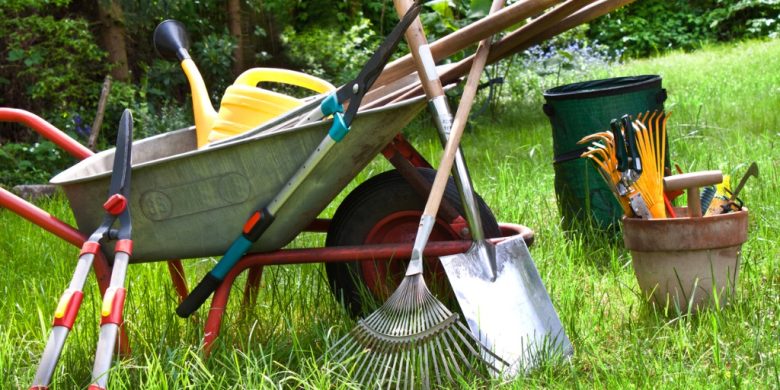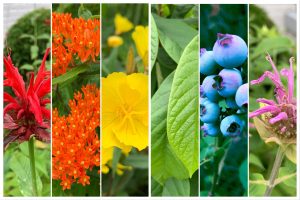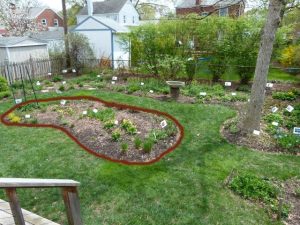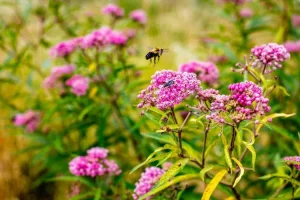Gardening is a timeless hobby that connects us with nature and brings many benefits for the environment and our well-being. Although traditional gardening has its charms, there is a growing interest in native gardening. Native gardening involves planting plants that grow naturally in your area, providing essential habitat for local wildlife and reducing the need for excessive maintenance. To embark on a successful native gardening journey, you will need some essential tools. In this article, we explore the must-have tools for homegrown gardeners.
1. Guide to Native Plants:
Before you start planting, it is important to know which plants are native to your area. Purchase a comprehensive native plant guide that provides information on species, growing conditions, and their benefits to local ecosystems. This will help you make informed choices when choosing plants for your garden.
2. Soil Test Kit:
Understanding soil composition is the foundation of native gardening. Many native plants have specific soil requirements. A soil test kit can help you determine the pH level, nutrient content, and drainage capabilities of your soil. With this knowledge, you can make the necessary adjustments to ensure your native plants thrive.
3. Native Plant Seeds or Seedlings:
To start creating your native garden you need the stars: the native plants themselves. Depending on your preference and gardening experience, you can choose seeds or seedlings. Seeds give you a sense of satisfaction watching your garden grow from scratch, while seedlings provide a good start for those who prefer a more mature garden.
4. Quality Garden Gloves:
Working in the garden can be tough for you, especially when dealing with soil and plants. Invest in a good pair of gardening gloves to protect your hands from thorns, pricks, and blisters. Choose gloves that are comfortable and durable so you can be sure they will last throughout the gardening season.
5. Pruning Shears:
Pruning is an important aspect of native gardening. Regular pruning helps maintain the health and shape of your plant. Choose high-quality pruning shears designed to cut branches and stems without damaging the plant.
6. Mulch and Compost:
Native plants benefit from a layer of mulch to retain moisture, regulate soil temperatures, and suppress weeds. Compost is essential for enriching the soil with organic matter. Together they create a thriving environment for your native garden.
7. Watering Can or Hose:
Native plants are often adapted to local rainfall patterns, but they still need water, especially during periods of drought. A watering bottle or hose with a gentle spray attachment will help you provide just the right amount of hydration without causing soil erosion or disturbing fragile roots.
8. Nature-friendly Features:
To encourage local wildlife to visit your own garden, consider adding amenities such as bird feeders, bird baths or butterfly-friendly plants. These elements not only enhance the beauty of the garden but also support the ecosystem.
9. Garden Magazine:
Keeping a garden journal is often underestimated, but is incredibly valuable to native gardening. Record your planting dates, observations of plant growth, observations of wildlife, and any problems you encounter. Keeping these records will help you refine your gardening techniques and adapt them to the unique conditions in your region.
10. Signage of Native Gardens:
Consider adding educational signage to your native garden. These signs inform visitors about the importance of native plants and their role in supporting local ecosystems. They can also provide detailed information about specific plants in your garden, helping others learn and appreciate the beauty and significance of native gardening.
11. Alternatives to Fertilizers:
Although native plants adapt to local soil conditions, you may need to provide some nutrients occasionally. Instead of traditional fertilizer, opt for organic alternatives such as compost tea or well-decomposed manure. These options are friendly to the environment and provide your plants with a source of slow-release nutrients.
12. Garden Cart or Wheelbarrow:
Moving heavy bags of soil, mulch or compost can be physically demanding. A garden cart or wheelbarrow makes these tasks much easier. Look for one with sturdy construction and air-filled tires for smooth movement over uneven terrain.
13. Insect Identification Guide:
Insects play a crucial role in pollinating native plants and maintaining the ecological balance of your garden. Purchase an insect identification guide to help you distinguish between beneficial insects and potential pests. This knowledge will guide your pest control strategies and ensure a healthy garden ecosystem.
14. Rain Gauge:
Native gardens thrive on natural rainfall, but it is crucial to monitor the amount of water your garden receives. A rain gauge allows you to keep track of precipitation so you can adjust your watering schedule accordingly. This promotes water conservation and prevents too much water.
15. Compost Bin:
If you have a passion for sustainable gardening, consider placing a compost bin in your backyard. This allows you to recycle kitchen and garden waste into nutrient-rich compost for your own garden, reducing waste and improving soil health.
16. Garden Hat and Sunscreen:
Protecting yourself from the sun is just as important as caring for your plants. A wide-brimmed garden hat and sunscreen can protect you from harmful UV rays, allowing you to garden safely and comfortably.
Conclusion
Native gardening is a rewarding and ecologically conscious endeavor that brings beauty and biodiversity to your outdoor space. By purchasing these basic tools and incorporating them into your gardening routine, you will be well-prepared for a successful native gardening journey. Remember that native gardening is a journey of discovery and conservation, and your efforts will contribute to the well-being of local ecosystems.
FAQs
1. What is native gardening?
Native gardening involves growing plants that grow naturally in your area. These plants adapt to local soil and climate conditions, making them easier to grow and maintain.
2. Why is native gardening important?
Native gardening supports local biodiversity, saves water, and reduces the need for pesticides and fertilizers. It also creates a habitat for native wildlife.
3. Does native gardening require special tools?
While you can start with basic gardening tools, some specialized tools can make home gardening more efficient and effective. See the list of basic tools in the main article.
4. How do I choose native plants for my garden?
Research native plants that are suitable for the soil and climate in your region. A native plant guide or consulting a local nursery can help you make the right choice.
5. Is native gardening more difficult than conventional gardening?
Native gardening can be easier in some ways because native plants are adapted to your environment. However, it requires careful planning and maintenance to create a thriving native garden.



